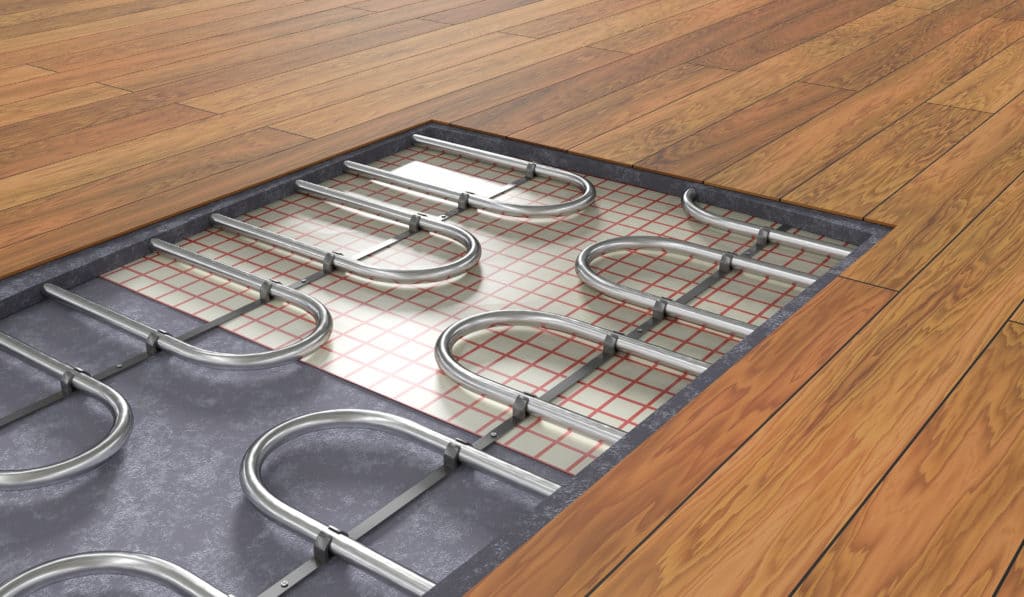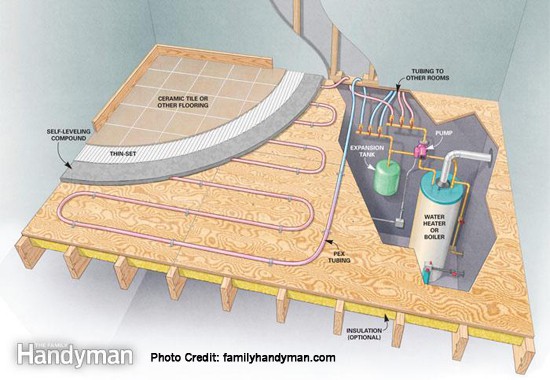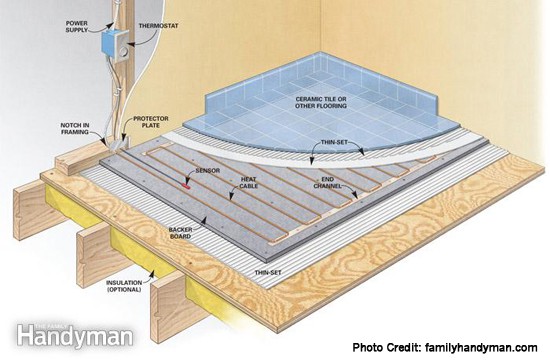If you feel uneven heating in your home during cold weather, you’re experiencing the physics of air movement. Heat naturally rises. With a forced-air system, heat is pushed to the ceiling and you wait for it to drop down as it cools. With a radiant floor heating system, heat begins at the base and slowly conducts upward, keeping you consistently warm in the process.
Let’s take a quick overview of the details of radiant floor heating.
Benefits of Radiant Heat
• Quiet way to heat with no visible ducts, radiators or holes
• Increases comfort with constant, low heat
• Better air quality, eliminates blowing dust from ductwork
• Will not dry out your skin or sinuses, does not rob air of moisture
• Can increase energy efficiency
Hydronic Radiant Floor Heating
The ancient Romans figured out the law of physics around heat and invented the water-based radiant system still in use today. Known as a hydronic system, heated water from a boiler is pumped through a network of piping under your floors.
For homes with a boiler system already in place, hydronic heating can be cost effective. Starting from scratch adds considerable start-up cost, but in both situations your energy bills will not dramatically increase, and may decrease over time.
The water system works best when used across the entire home (similar to a radiator system) or large floor areas, and run constantly during cold weather to maintain an even temperature. It needs to be installed between existing subfloor with new flooring above it. This increases the thickness of your flooring. Systems can be installed on the underside of floors, such as the basement ceiling, but this tends to reduce the conductive effectiveness.
Electric Radiant Floor Heating
Electric radiant heat is a series of electric wires buried under the floor and controlled by a thermostat. These systems are more affordable and easier to install, which makes them ideal for remodeling projects, but cost more to operate on a daily basis, increasing your electric bill.
They work best in small areas as on-demand heat controlled by a timer, making them ideal for bathrooms, mudrooms or sunrooms. It adds to your comfort in specific situations rather than act as a primary heat source, so it integrates very well with existing forced-air systems.
Types of Flooring for Radiant Heat
Radiant floors need materials that naturally conduct heat while withstanding direct contact with high temperatures. Follow the example of the ancient Romans and use stone, concrete or ceramic tile flooring.
Real wood floors tend to eventually dry out from radiant heat, causing shrinkage, cracks and gaps. Engineered wood performs slightly better, but shares some of the temperature limitations of vinyl and laminate flooring. For best performance, use these materials only for electric radiant heat on a timer.
Carpeting tends to work like a pot holder does for a hot pan, insulating you from the heat, so is not recommended flooring. But throw rugs are always a good idea.
St. Louis, MO remodeling firm Mosby Building Arts frequently uses radiant floor heating in home improvement projects To explore the possibilities of radiant floor heating in your home, give us a call at 314-909-1800, or contact us here






